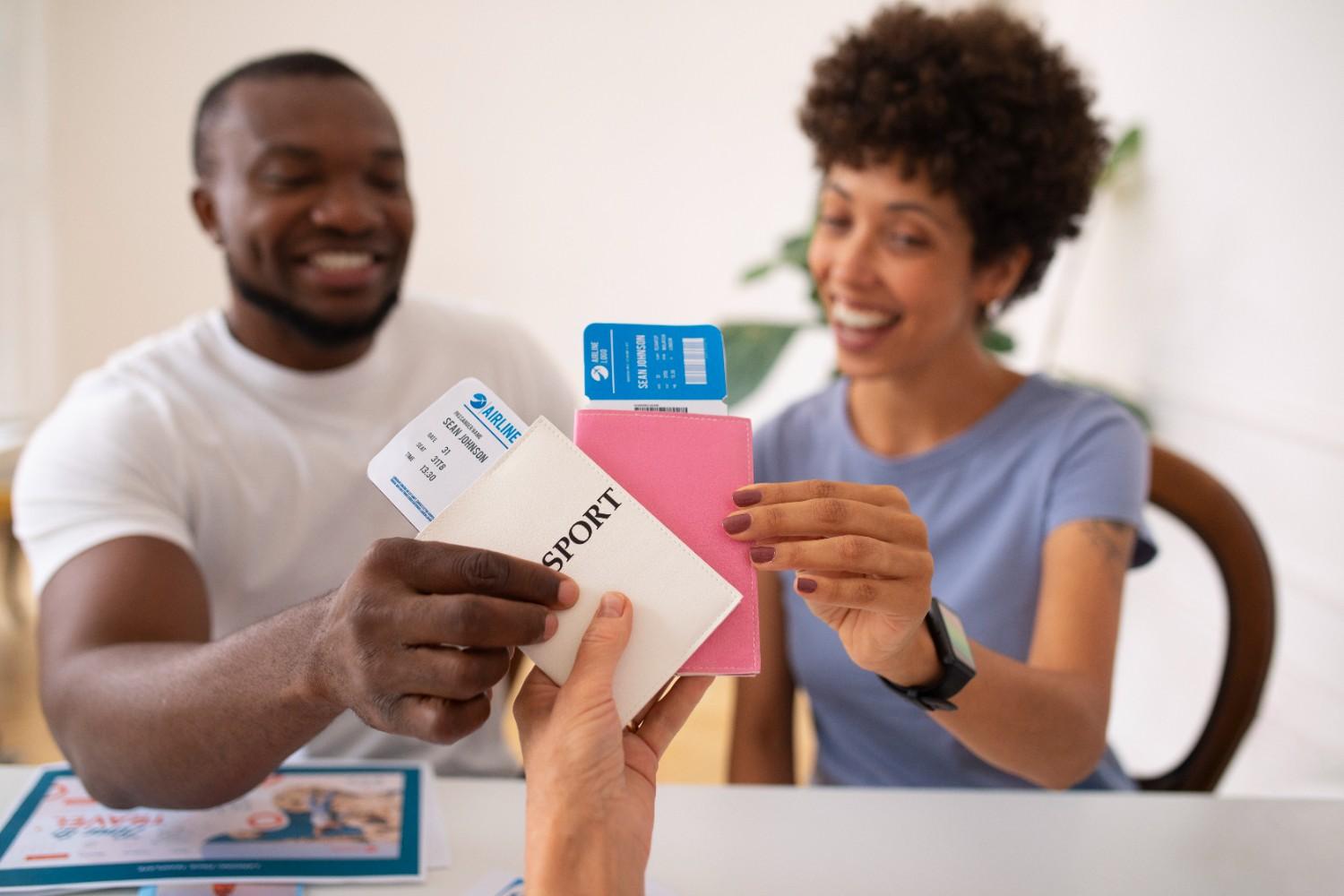The journey to obtaining a United States visa begins long before you step into the consular office for your interview. One of the most critical yet often overlooked aspects of this process is scheduling your visa appointment efficiently. Whether you’re planning a vacation, pursuing educational opportunities, or conducting business in America, understanding the intricacies of the appointment scheduling system can save you valuable time, reduce stress, and significantly improve your chances of a smooth application experience.
In today’s interconnected world, the demand for US visas continues to surge, creating longer wait times and increased competition for available appointment slots. This comprehensive guide will walk you through every aspect of scheduling your US visa appointment, from understanding the system’s architecture to implementing strategic approaches that can expedite your timeline. By mastering these techniques, you’ll position yourself ahead of the curve and navigate what many consider the most frustrating part of the visa application process.
Understanding the US Visa Appointment System Framework
The United States visa appointment system operates through a sophisticated online platform that serves millions of applicants worldwide. This digital infrastructure connects applicants with US embassies and consulates across the globe, managing the complex logistics of scheduling interviews for various visa categories. The system’s primary purpose is to create an organized, fair, and efficient process for handling the overwhelming volume of visa applications received annually.
At its core, the appointment system functions as a gateway between applicants and consular services. When you begin your visa application journey, you’ll interact with multiple interconnected platforms. The first is the Consular Electronic Application Center, where you complete your DS-160 form. Following this, you’ll navigate to the visa appointment scheduling website specific to your country, which manages interview bookings, fee payments, and document submissions. Understanding how these systems communicate and operate together is fundamental to scheduling your appointment efficiently.
The appointment scheduling platform operates on a dynamic availability model, meaning that appointment slots are released and updated regularly based on consular capacity, staffing levels, and seasonal demands. This fluid nature of appointment availability creates both challenges and opportunities for savvy applicants who understand how to monitor and capitalize on system patterns. Embassy and consulate offices typically release new appointment slots in batches, often following predictable patterns that observant applicants can leverage to their advantage.
Visa Categories and Their Impact on Appointment Availability
Different visa categories experience varying levels of demand and, consequently, different appointment availability patterns. Tourist and business visas, categorized as B1/B2 visas, typically see the highest volume of applications, resulting in longer wait times during peak travel seasons. Student visas (F-1, M-1) experience surge periods aligned with academic calendars, creating predictable busy seasons from March through July. Work-related visas, including H-1B, L-1, and other employment-based categories, often have more consistent availability throughout the year but may require additional administrative processing time.
Understanding your specific visa category’s typical processing timeline and demand patterns allows you to plan strategically. For instance, if you’re applying for a student visa for fall semester enrollment, beginning your application process in early spring provides buffer time for potential delays and increases your chances of securing a convenient appointment slot. Similarly, business travelers can often find better availability during traditional vacation periods when tourist visa demand peaks but business travel typically decreases.
The relationship between visa category and appointment scheduling extends beyond mere availability. Certain visa types qualify for interview waiver programs, potentially eliminating the need for an in-person appointment altogether. These programs, which vary by country and applicant history, can significantly streamline the process for eligible individuals. Renewal applicants for certain visa categories may qualify for drop-box services, where documents are submitted without requiring a formal interview, effectively bypassing the traditional appointment scheduling challenges.
Optimal Timing Strategies for Appointment Scheduling
Timing is perhaps the single most crucial factor in efficiently scheduling your visa appointment. The global visa appointment system experiences predictable fluctuations in demand throughout the year, creating windows of opportunity for strategic applicants. Understanding these patterns and planning accordingly can reduce your wait time from months to weeks.
Peak season for US visa applications typically runs from April through August, coinciding with summer vacation planning and the upcoming academic year. During these months, appointment slots become scarce, and wait times can extend dramatically. Conversely, the period from late September through early December often sees reduced demand, as most summer travelers have completed their trips and holiday season applications haven’t yet begun in earnest. This shoulder season presents optimal conditions for securing appointments with minimal wait times.
The day of the week and time of day you attempt to schedule your appointment can also significantly impact your success. Statistical analysis of appointment release patterns reveals that many consular offices release new slots on Monday mornings and Thursday afternoons in their local time zones. Additionally, cancelled appointments often become available in real-time, creating opportunities for vigilant applicants who monitor the system during typical business hours. Early morning hours, particularly between 6 AM and 8 AM local embassy time, often yield the best results for finding newly released or recently cancelled slots.
Creating Your Profile and Account Management
Before diving into the appointment scheduling process, establishing a robust and accurate profile is essential. Your profile serves as the foundation for all subsequent interactions with the visa appointment system, and any errors or inconsistencies can create complications that delay your application significantly. Begin by carefully entering your personal information exactly as it appears on your passport, paying special attention to spacing, punctuation, and special characters in your name.
The profile creation process requires you to establish login credentials that you’ll use throughout your visa journey. Choose a secure password that you can remember easily, as frequent password resets can flag your account for additional security reviews. Many applicants make the mistake of creating multiple profiles when they encounter difficulties, but this practice can lead to confusion and potential application conflicts. Instead, maintain a single profile and ensure all information remains current and accurate.
Your profile dashboard becomes your command center for managing the appointment scheduling process. From here, you can track your application status, view appointment availability, make payments, and update your contact information. Familiarize yourself with all dashboard features before beginning the scheduling process, as efficient navigation can save crucial seconds when competing for limited appointment slots. The system typically maintains your session for 20 minutes of inactivity, so understanding how to quickly navigate between sections prevents frustrating timeouts during critical booking moments.
Payment Processing and Fee Structure
Understanding the fee structure and payment processing requirements is crucial for efficient appointment scheduling. The visa application fee, formally known as the Machine Readable Visa (MRV) fee, must be paid before you can access appointment scheduling options. This fee varies by visa category and is non-refundable, regardless of whether your visa is approved or denied. Payment methods differ by country, with some locations accepting online payments while others require bank deposits or cash payments at designated locations.
The payment confirmation process can take anywhere from immediately to 48 hours, depending on your payment method and country-specific processing requirements. Credit and debit card payments typically reflect instantly in the system, allowing immediate access to appointment scheduling. Bank transfer payments may require manual verification, potentially delaying your ability to book an appointment by one to two business days. Understanding these timelines helps you plan your payment strategy to align with your desired appointment scheduling window.
Some countries offer premium or expedited appointment services for additional fees. These services can significantly reduce wait times but come at a substantial cost premium. Evaluate whether expedited processing aligns with your travel timeline and budget constraints. In many cases, strategic standard appointment scheduling can achieve similar results without the additional expense. However, for time-critical travel needs, expedited services provide valuable peace of mind and scheduling flexibility.
Document Preparation and Appointment Readiness
Efficient appointment scheduling extends beyond simply securing a slot; it includes ensuring you’re fully prepared for your interview when the date arrives. Begin gathering required documents immediately after initiating your visa application, as last-minute document scrambles can force you to reschedule, potentially losing your preferred appointment slot and facing extended wait times for rebooking.
Essential documents typically include your valid passport, DS-160 confirmation page, appointment confirmation letter, photographs meeting specific requirements, and supporting documents relevant to your visa category. Financial documentation, such as bank statements, tax returns, and employment verification letters, should be organized chronologically and translated if necessary. Educational documents for student visa applicants should include acceptance letters, transcripts, and standardized test scores. Business travelers need invitation letters, conference registrations, or business correspondence demonstrating the purpose of their trip.
Creating a comprehensive document checklist specific to your visa category prevents overlooked requirements that could derail your appointment. Many applicants find success in preparing both physical and digital copies of all documents, ensuring redundancy in case of loss or damage. Organize documents in a logical sequence that follows the typical interview flow, allowing you to quickly present requested information without fumbling through papers. This level of preparation not only ensures appointment readiness but also demonstrates to consular officers that you’re a serious, well-organized applicant.
Monitoring Systems and Alert Strategies
Given the competitive nature of securing preferred appointment slots, implementing effective monitoring systems can dramatically improve your chances of success. While the official appointment system doesn’t offer built-in notification features for appointment availability, several legitimate strategies can help you stay informed about opening slots without constantly refreshing the website.
Manual monitoring involves regularly checking the appointment system during strategic time windows. This approach works best when you understand your local embassy’s appointment release patterns and can dedicate specific time blocks to active monitoring. Create a monitoring schedule that aligns with typical slot release times, focusing your efforts during high-probability windows rather than random checking throughout the day. This targeted approach maximizes your efficiency while minimizing the time investment required.
Browser automation tools and extensions can assist with monitoring by automatically refreshing pages and alerting you to changes in appointment availability. While using these tools, ensure they comply with the appointment system’s terms of service to avoid potential account restrictions. Set refresh intervals that mimic natural human browsing patterns, typically between 30 seconds and 2 minutes, to avoid triggering system security measures. Configure audio or visual alerts that immediately notify you when changes occur, allowing you to quickly capitalize on newly available slots.
Dealing with Technical Challenges and System Errors
Technical difficulties are an unfortunate reality when dealing with high-traffic online systems, and the visa appointment platform is no exception. Understanding common technical issues and their solutions can prevent frustration and help you maintain progress toward securing your appointment. The most frequent challenges include session timeouts, payment processing errors, and system maintenance periods that temporarily restrict access.
Session timeout errors occur when the system logs you out due to inactivity or security protocols. To minimize timeout disruptions, prepare all necessary information before beginning your scheduling session. Keep your DS-160 confirmation number, passport details, and payment receipt readily accessible to quickly re-enter information if needed. Some applicants find success in maintaining activity by periodically clicking within the system while searching for appointments, preventing automatic logouts during extended scheduling sessions.
Payment processing errors can be particularly frustrating, as they may prevent access to appointment scheduling despite successful fee payment. If you encounter payment verification issues, first confirm that your payment has been processed by checking your bank statement or payment receipt. Allow the full processing window specified for your payment method before contacting support. Document all payment confirmations with screenshots and transaction numbers, as this evidence expedites resolution if manual intervention becomes necessary.
System maintenance windows, while necessary for platform stability, can disrupt your scheduling plans. Most embassies announce maintenance schedules in advance through their websites or social media channels. Stay informed about planned maintenance to avoid wasting time attempting to schedule during system downtime. Additionally, be aware that immediately following maintenance periods, the system often experiences high traffic as accumulated users rush to schedule appointments, potentially causing slower response times.
Regional Variations and Embassy-Specific Considerations
Each US embassy and consulate operates with unique procedures, timelines, and appointment availability patterns. Understanding your specific embassy’s characteristics and requirements is crucial for efficient scheduling. Larger embassies in major cities typically offer more appointment slots but also face higher demand, while smaller consulates might have limited slots but less competition. Research your embassy’s specific patterns by reviewing recent applicant experiences and official embassy communications.
Some embassies offer multiple locations for visa services, with certain locations designated for specific visa categories or services. For example, some countries have separate facilities for immigrant and non-immigrant visa processing, each with distinct scheduling systems and availability. Understanding these distinctions prevents confusion and ensures you’re scheduling appointments at the correct location for your visa type. Additionally, some applicants may have flexibility to apply at different embassies within their region, potentially accessing better availability by choosing a less congested location.
Cultural and regional factors also influence appointment scheduling patterns. Countries with strong seasonal migration patterns, such as those with large student populations traveling to the US for fall semester, experience predictable surges in demand. Similarly, business hubs may see consistent demand for business visa appointments throughout the year. Understanding your region’s specific patterns helps you anticipate busy periods and plan accordingly.
Interview Preparation While Waiting for Your Appointment
The period between scheduling your appointment and attending your interview provides valuable preparation time that shouldn’t be wasted. Use this interval to thoroughly prepare for your interview, ensuring you can articulate your travel purpose, demonstrate strong ties to your home country, and present your documentation effectively. This preparation phase is particularly crucial if you’ve scheduled an appointment several weeks or months in advance.
Begin by reviewing common interview questions specific to your visa category and practicing your responses. While you shouldn’t memorize scripted answers, being comfortable discussing your travel plans, financial situation, and ties to your home country helps you communicate confidently during the interview. Practice explaining complex situations in simple, clear terms, as language barriers or nervousness can impact your ability to communicate effectively during the actual interview.
Stay informed about any changes to visa policies or requirements during your waiting period. Immigration policies can shift based on diplomatic relations, security concerns, or administrative changes. Regularly check official embassy websites and trusted immigration news sources to ensure your preparation remains current. If significant policy changes occur that might affect your application, consider whether rescheduling your appointment to allow for additional preparation would be beneficial.
Rescheduling and Cancellation Procedures
Despite careful planning, circumstances sometimes necessitate rescheduling your visa appointment. Understanding the rescheduling process and its implications helps you make informed decisions if changes become necessary. Most appointment systems allow limited rescheduling opportunities, typically between one and three times, depending on your location. Each rescheduling attempt may push your appointment further into the future, as you re-enter the queue for available slots.
The timing of your rescheduling request significantly impacts your options. Rescheduling well in advance of your appointment date often provides better availability than last-minute changes. If you must reschedule within 24-48 hours of your appointment, you may face significantly limited options or be unable to reschedule online, requiring direct contact with the embassy. Some embassies impose waiting periods between rescheduling requests or limit rescheduling for certain visa categories.
Cancellation policies vary by embassy but generally follow similar principles. If you cancel your appointment without rescheduling, you may need to pay the application fee again to book a new appointment in the future. Some embassies allow fee validity for up to one year from the payment date, providing flexibility for future applications. However, this policy isn’t universal, so verify your specific embassy’s requirements before cancelling. Document all cancellations and rescheduling actions with screenshots and confirmation numbers to protect yourself in case of system errors or disputes.
Emergency and Expedited Appointment Options
Genuine emergencies and urgent travel needs sometimes require expedited visa processing beyond standard scheduling options. Most embassies offer emergency appointment services for specific qualifying circumstances, including medical emergencies, urgent business travel, or humanitarian reasons. Understanding these options and their qualification requirements helps you determine whether your situation warrants requesting expedited processing.
Medical emergency appointments typically require documentation from healthcare providers confirming the urgent need for treatment in the United States. This might include specialist referrals, treatment plans, or letters from US medical facilities confirming scheduled procedures. The documentation must clearly establish why treatment cannot be delayed or obtained elsewhere. Similarly, family emergency appointments for serious illness or funeral attendance require death certificates, medical reports, or official documentation establishing your relationship to the affected individual.
Urgent business travel may qualify for expedited appointments if you can demonstrate significant financial or professional consequences from delays. This might include contract negotiations, time-sensitive business opportunities, or critical professional events that cannot be rescheduled. Conference speakers, essential technical specialists, and individuals involved in significant economic transactions often qualify for expedited processing. However, routine business meetings or conferences planned well in advance typically don’t meet emergency criteria.
Leveraging Technology and Digital Tools
Modern technology offers numerous tools and resources to enhance your appointment scheduling efficiency. While maintaining compliance with official system requirements, various digital tools can streamline your preparation, monitoring, and scheduling processes. Password managers help you securely store and quickly access your login credentials, preventing delays from forgotten passwords. Calendar applications with reminder functions ensure you don’t miss important deadlines or appointment dates.
Document scanning and cloud storage applications allow you to maintain digital copies of all required documents, accessible from any device. This proves particularly valuable if you need to reference documents while scheduling your appointment or if physical documents are lost or damaged. Ensure any cloud storage service you use complies with privacy regulations and offers adequate security for sensitive personal information.
Translation applications and services help non-native English speakers prepare for their appointments and understand system requirements. While the appointment scheduling system often offers multiple language options, having reliable translation tools ensures you fully comprehend all requirements and instructions. This is particularly important for understanding specific document requirements or special instructions that may not be available in your preferred language.
Building a Support Network
Navigating the visa appointment scheduling process becomes significantly easier with proper support and guidance. Building a network of resources and contacts can provide valuable insights, moral support, and practical assistance throughout your journey. Online forums and communities dedicated to US visa applications offer peer support and real-time information about appointment availability, system changes, and embassy-specific experiences.
Professional immigration consultants and attorneys can provide expert guidance for complex cases or when facing unusual circumstances. While many applicants successfully schedule appointments independently, professional assistance may be valuable if you have previous visa denials, complex travel history, or unique documentation requirements. When selecting professional assistance, verify credentials and avoid services that promise guaranteed appointments or claim special access to the scheduling system.
Family members and friends who have recently gone through the visa application process can offer practical insights and emotional support. They can share their experiences with specific embassies, alert you to potential challenges, and provide encouragement during frustrating moments. However, remember that visa requirements and processes change frequently, so verify that advice based on past experiences remains current and applicable to your situation.
Post-Appointment Scheduling Considerations
Successfully scheduling your appointment marks a significant milestone, but important tasks remain to ensure a smooth interview experience. Immediately after confirming your appointment, create multiple backups of your confirmation details, including screenshots, PDF downloads, and printed copies. Store these confirmations in multiple locations to ensure you can access them even if technical issues arise.
Review your appointment confirmation carefully for any special instructions or additional requirements specific to your appointment. Some embassies require additional registration steps, security clearances, or document submissions before your interview date. Missing these requirements could result in appointment cancellation or denial of entry to the consular facility. Set reminders for any deadline-driven requirements to ensure timely completion.
Plan your logistics well in advance of your appointment date. This includes arranging transportation to the embassy, understanding parking or public transit options, and identifying the specific entrance for visa applicants. Many embassies have multiple entrances, with visa services using designated doors that may differ from the main embassy entrance. Arriving at the wrong location can cause delays that risk missing your appointment window.
Conclusion: Mastering the Art of Efficient Visa Appointment Scheduling
Scheduling your US visa appointment efficiently requires a combination of preparation, strategy, patience, and adaptability. The complex nature of the appointment system, combined with high demand and technical challenges, can make the process seem daunting. However, by understanding the system’s underlying mechanics, implementing strategic timing approaches, and maintaining organized preparation throughout the process, you can significantly improve your chances of securing a convenient appointment slot that aligns with your travel plans.
Remember that the appointment scheduling process is just one component of your overall visa application journey. While securing an appointment is crucial, maintaining focus on comprehensive preparation for your interview ultimately determines your visa application success. Use the time between scheduling and attending your appointment wisely, ensuring all documentation is complete, your interview responses are well-considered, and you’re fully prepared to demonstrate your qualification for the requested visa category.
The strategies and insights provided in this guide reflect current best practices and system understanding, but the visa appointment landscape continues to evolve. Stay informed about system updates, policy changes, and embassy-specific modifications that might impact your scheduling strategy. Flexibility and adaptability remain your greatest assets in navigating this complex process.
As international travel continues to rebound and evolve in our interconnected world, the demand for US visas will likely continue growing. By mastering the appointment scheduling process now, you’re not just preparing for a single trip but developing skills and knowledge that will serve you throughout your international travel journey. Whether this is your first visa application or you’re a seasoned traveler, approaching the appointment scheduling process with patience, preparation, and strategic thinking will help you achieve your travel goals efficiently and with minimal stress.
The investment of time and effort in understanding and optimizing your appointment scheduling approach pays dividends beyond simply securing an interview slot. It demonstrates to consular officers that you’re a serious, organized applicant who respects the visa process and requirements. This positive impression, established before you even enter the interview room, can contribute to a successful visa application outcome.
Finally, remember that while efficiency is important, accuracy and completeness should never be sacrificed for speed. A properly scheduled appointment with complete preparation is far more valuable than a rushed booking that leads to rescheduling or visa denial. Take the time to understand each step, prepare thoroughly, and approach the process with confidence. Your careful attention to the appointment scheduling process is the first step toward achieving your American travel dreams.






